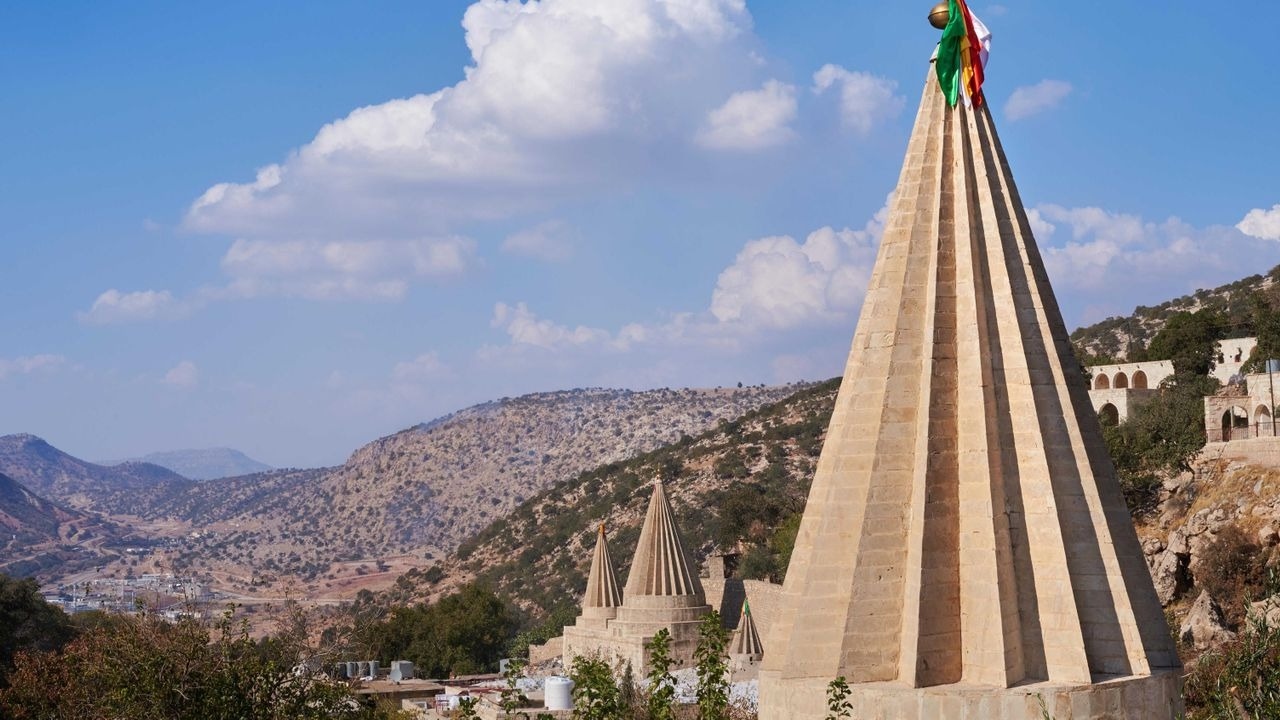
Yazidism is a unique and ancient religion practiced primarily by the Kurdish-speaking Yazidi people. Rooted in Mesopotamian traditions, it blends elements of Zoroastrianism, Islam, Christianity, and Judaism. Yazidis believe in one God who created the world and left it under the care of seven holy beings, with Melek Taus, the Peacock Angel, being the most significant. Despite facing persecution and misunderstanding, Yazidis have preserved their rich cultural heritage and religious practices. This post will delve into 31 intriguing facts about Yazidism, shedding light on its history, beliefs, rituals, and the resilience of its followers.
Origins of Yazidism
Yazidism is a unique and ancient religion with deep roots in the Middle East. Let's explore some fascinating facts about its origins and early history.
- Yazidism originated in the Kurdish regions of Iraq, Syria, and Turkey.
- The religion dates back over 4,000 years, making it one of the oldest in the world.
- Yazidis believe their faith was founded by Sheikh Adi ibn Musafir, a 12th-century mystic.
- The religion incorporates elements from Zoroastrianism, Islam, Christianity, and ancient Mesopotamian religions.
Beliefs and Practices
Yazidism has a rich tapestry of beliefs and practices that set it apart from other religions. Here are some key aspects of their faith.
- Yazidis worship a single God, referred to as Xwedê.
- They believe in seven holy beings, known as the Seven Angels, who assist God in managing the world.
- The most important of these angels is Melek Taus, the Peacock Angel.
- Yazidis practice a form of reincarnation, believing souls are reborn into new bodies.
- They have a strong emphasis on purity and cleanliness in their daily lives.
- Yazidis pray three times a day, facing the sun.
Sacred Texts and Symbols
The sacred texts and symbols of Yazidism hold great significance for its followers. Let's delve into some of these important elements.
- The Yazidi holy book is called the Mishefa Re?, or the Black Book.
- Another important text is the Kitêba Cilwe, or the Book of Revelation.
- The Peacock Angel, Melek Taus, is often depicted as a colorful peacock.
- The sun is a central symbol in Yazidism, representing life and divinity.
- Yazidis use the Lalish Valley in Iraq as their most sacred site.
Festivals and Celebrations
Yazidis have several unique festivals and celebrations that mark important events in their religious calendar. Here are some of the most notable ones.
- The most important Yazidi festival is the Feast of the Assembly, held in Lalish.
- Yazidis celebrate the New Year, known as Sere Sal, in mid-April.
- The Festival of the Peacock Angel, or Eid al-Jam?‘iyya, is another significant event.
- Yazidis observe a three-day fast in December, known as the Fast of Êzîd.
- The Feast of Sacrifice, or Eid al-Adha, is also celebrated by Yazidis.
Persecution and Resilience
Throughout history, Yazidis have faced significant persecution but have shown remarkable resilience. Here are some key facts about their struggles and survival.
- Yazidis have been targeted for their beliefs by various groups, including ISIS.
- The 2014 genocide by ISIS led to the displacement of thousands of Yazidis.
- Many Yazidi women were captured and enslaved by ISIS during this period.
- Despite these hardships, Yazidis have maintained their cultural and religious identity.
- International efforts have been made to support and protect the Yazidi community.
Modern Yazidism
Yazidism continues to evolve in the modern world, adapting to new challenges and opportunities. Let's look at some contemporary aspects of the religion.
- There are an estimated 700,000 Yazidis worldwide, with the largest population in Iraq.
- Yazidi communities can also be found in Germany, Armenia, and Georgia.
- Efforts are being made to preserve Yazidi culture and language through education.
- Yazidi women have become prominent advocates for their community's rights.
- The Yazidi spiritual leader, known as the Baba Sheikh, plays a crucial role in guiding the community.
- Yazidis are working to rebuild their lives and communities after the devastation caused by ISIS.
Final Thoughts on Yazidism
Yazidism, a unique and ancient religion, has a rich tapestry of beliefs and traditions. Its followers, the Yazidis, have faced numerous challenges throughout history, yet their faith remains resilient. From the reverence of Melek Taus to the celebration of the New Year in April, Yazidism offers a fascinating glimpse into a lesser-known spiritual world. Understanding these facts not only broadens our knowledge but also fosters appreciation for the diversity of human belief systems. By learning about Yazidism, we gain insight into the strength and perseverance of its people. This knowledge encourages respect and empathy, reminding us of the importance of preserving cultural heritage. So, next time you hear about Yazidism, you'll have a deeper understanding of its significance and the rich history behind it.
Was this page helpful?
Our commitment to delivering trustworthy and engaging content is at the heart of what we do. Each fact on our site is contributed by real users like you, bringing a wealth of diverse insights and information. To ensure the highest standards of accuracy and reliability, our dedicated editors meticulously review each submission. This process guarantees that the facts we share are not only fascinating but also credible. Trust in our commitment to quality and authenticity as you explore and learn with us.


